Cuevas Bicycles was a multi-generational family of bicycle frame builders based in Astoria, Queens. I have owned two Cuevas bicycles: the one shown above is a one-of-a-kind custom made pursuit bicycle with a 650c front wheel and a 700c rear, with an integrated handlebar/stem. It was hand made by Fernando Cuevas, the third generation of this incredibly talented family. I also had a Cuevas Custom randonneur / touring frame by the patriarch of the family, Francisco Cuevas. This article features both of these stunning examples of custom, lugged steel bicycles and traces the history of Cuevas Bicycles.
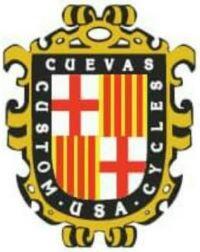 Fernando’s grandfather and founder of Cuevas Bicycles, Francisco Cuevas, hand-built over 35,000 frames during a 70-year career that spanned three continents. Renowned for his ability to build frames without the aid of a jig or pins, brazing exclusively with brass, and incorporating many unique and thoughtful details, Francisco was a true craftsman of the old world. The Cuevas Custom randonneur frame is testament to his vision and artisan skills.
Fernando’s grandfather and founder of Cuevas Bicycles, Francisco Cuevas, hand-built over 35,000 frames during a 70-year career that spanned three continents. Renowned for his ability to build frames without the aid of a jig or pins, brazing exclusively with brass, and incorporating many unique and thoughtful details, Francisco was a true craftsman of the old world. The Cuevas Custom randonneur frame is testament to his vision and artisan skills.
The pursuit track bike restoration took me two years to complete, and when finished, I brought it to the famous Kissena Velodrome in Queens for an afternoon of laps and photos. Read on to learn more about these incredible bikes and the Cuevas family.
Born in Spain in 1915, Francisco Cuevas began his career at the age of 14, working in a bicycle factory in Barcelona before becoming an apprentice frame builder. By the age of 18, he was building and racing his own frames. When the Spanish Civil War broke out in 1936, the young Fernando joined the Republican forces resisting General Franco’s fascist Nationalist faction. Cuevas survived the defeat of the Republicans and the end of the war in 1939, and returned to the bicycle business afterwards. He married in 1940, and his eldest son Paco was born in 1942, followed by his daughter Maria in 1946.
Although Spain stayed neutral during the World War 2 (which began just months after the end of the Spanish Civil War), life was hard in Franco-era Spain, as the new government brutally repressed its people during the 1940s. At the end of World War 2, Spain suffered from the consequences of its isolation from the international economy, with the victorious Allied countries withholding Marshall Plan funding that was given to other European countries to rebuild after the war. It was against this bleak backdrop in 1951 that Francisco Cuevas decided to immigrate to Argentina. He settled in Mendoza and was the trainer and coach for the Argentine National cycling team.
At the end of the 1960s, the Argentine government was in upheaval, and the economy had collapsed. The current dictator Juan Carlos Onganía and resurgent former president Juan Perón vied for power in a complex and often violent struggle. In 1971, once again seeking a more safe and stable home country, Francisco Cuevas left for the United States. He settled in New York City, initially working as a bike mechanic.
In 1977, he met Mike Fraysee, owner of the famous Paris Sport brand and Victor Cycles bicycle store. He began working for Fraysee at his Ridgefield Park, New Jersey shop. In 1979 he spent six weeks working with Pepe Limongi, a French frame builder who made the Paris Sport bikes. The time spent with Limongi rekindled Mr. Cuevas’s love of frame building, and along with his sons Paco and Andres, he set up his own custom shop in Queens, NYC.
I acquired a Cuevas Custom as part of a larger collection I purchased last year. It had not been properly maintained, and needed a full cleaning. It was built up with a Campagnolo Nuovo Record triple group set, and utilized bar-end shifters. As I stripped the parts and carefully cleaned the frame, the unique details of a Cuevas frame began to shine. Francisco made his own cable guides by hand, and carved his signature heart-shaped windows in the Prugnat lugs. The “fish mouth” style of filing the ends of the chain stays and seat stays where they meet the rear dropouts is immaculate. To see these details, click the images in the gallery below for hi-res closeups:
The carved bird in the bottom bracket shell is one of my favorite touches. Also note the underside of the fork crown in the fourth picture in the top row – this was a Cuevas signature. In a 1984 Bicycling Magazine profile, the author explained:
“[…] Cuevas’ rationale for this is to provide the strongest Stress path possible between the ground and the bike, He feels that high-impact stresses not resisted or dampened by the steering tube are transferred to another portion of the frame along the stress path, which means that in a frame without an X-stiffener, the bottom bearing of the headset, the head tube, and the down tube are subjected to more intense forces. Under normal riding conditions, the stiffener makes no difference in the way the bike rides.”
Throughout the 1980s, Francisco and Paco would build the frames with Andres handling all of the painting. Paco’s son Fernando was a talented track cyclist, winning NY state and district track championships in 1980-83 and going on to take part in road and track racers across the USA and abroad. He also apprenticed in the shop, learning to build frames from his grandfather. The eldest Cuevas eventually retired, returning to his home city of Barcelona, where he passed away in 2005. Fernando wrote this beautiful eulogy for him.
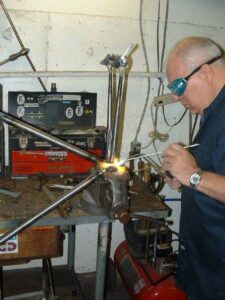
Fernando Cuevas brazing a frame
After Francisco retired, Andres began working at the Cosmic Wheel bike shop. Cosmic Wheel was originally based in Bogota, NJ, but the owner later bought out the Fraysse’s store in Ridgefield Park and moved Cosmic Wheel into that location. In a curious twist of fate, Andres had returned the space where his father had built frames years before. Back in New York City, Paco and Fernando continued building frames under the Cuevas marque, with support from Andres until a stroke forced his retirement.
Fernando continued the Cuevas tradition, building frames and introducing new generations of young people to track cycling through Mike Fraysee’s Americas Cycling Team program. Sadly, Fernando passed away in 2017, bringing the Cuevas bicycles story to a close. However, his vision and passion for track cycling continues through the Cuevas junior cycling team, which is now supported by Brands Cycles in Long Island, New York.
This brings us back to the pursuit track bike I previewed in the beginning of the article. This particular Cuevas bicycle was built for a track racer on Mike Fraysee’s Americas Cycling Team. Based on the design, age and details of the bike, it was most likely made by Fernando some time in the late 1990s or early 2000s. I obtained this frame as part of a large lot of surplus items from Mike Fraysee’s former store, where it had been sitting forgotten and rusting along with old wheels and parts. I knew right away that this was a special bike:
Some of the unique details of this bike include a handmade integrated stem / bullhorn handlebar combo, custom filed lugs, and a curved seat tube. Also note the plate added to the triple-triangle seat stays to further stiffen them. Similar to the Cuevas Custom randonneur frame, the head and seat lugs have large windows carved in them.
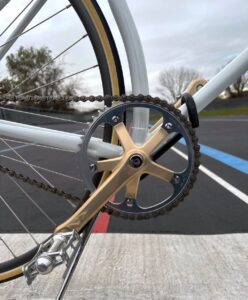 I sent the frame over to the folks at Groody Bros, who did a magnificent job giving it a white paintjob with a subtle silver sparkle flake mixed in. The reproduction Cuevas decals were made good folks at Bicycle Decals in the UK. If you have a Cuevas you’re restoring, they are the only source I know of making them.
I sent the frame over to the folks at Groody Bros, who did a magnificent job giving it a white paintjob with a subtle silver sparkle flake mixed in. The reproduction Cuevas decals were made good folks at Bicycle Decals in the UK. If you have a Cuevas you’re restoring, they are the only source I know of making them.
The components are a mix of Suntour, Sugino, and Campagnolo. I spent over a year finding a matched 650c/700c set of Araya Aero 4 rims to lace to the Suntour Superbe Pro track hubs.
The cranks are Sugino 75, the special gold “Grand Mighty” version that adds a little flair to the build. The headset is Suntour, and the bottom bracket Campagnolo Pista.
I took the bike for several laps around the Kissena Velodrome track in my hometown of Queens, NYC on a cold and windy day. It was initially a bit intimidating, as it’s a stiff and aggressive machine made for speed. As I got used to it, I began thrilling at its handling as I tore down the straightaways and around the banked ends of the track. This bike is 100% performance, a thoroughbred and a unicorn at the same time.
It’s also been one of the most fun restorations I’ve done in a while. The simplicity of a fixed gear bike, especially a true track racing machine, allows one to indulge that desire to find exactly the right parts and build for a restoration. It hides nothing, so all parts must be harmonious, both visually and mechanically. I think I’ve achieved that goal with this restoration, and am glad to have been able to pay tribute to a Queens, NYC hero of the bicycle world in the process.
Further Reading: To learn more about Francisco Cuevas and his bikes, I have uploaded two detailed articles from Bicycling Magazine. Credit to Bikeforums’ member “SpeedofLite” for scanning and uploading them to the web. I also have a scan of the Cuevas Bicycle catalog from 1983, courtesy of the Bulgier Archive. Click the links to open the articles in a new window:
- Sahagian, Tom and Greco, Rudolf E., Jr. “Francisco Cuevas: 35,000 Frames and Counting…” Bicycling Magazine, August 1982
- Jow, Richard, “Cuevas Custom and Super Corsa: Two Framesets from a Spanish Master” Bicycling Magazine, July 1984
- Cuevas Bicycles catalog, 1983
- A Tribute to Francisco Cuevas
Please enjoy the gallery of hi-res photos of the bike, below. Please leave a comment if you enjoyed this article or have a memory of the Cuevas family to share.

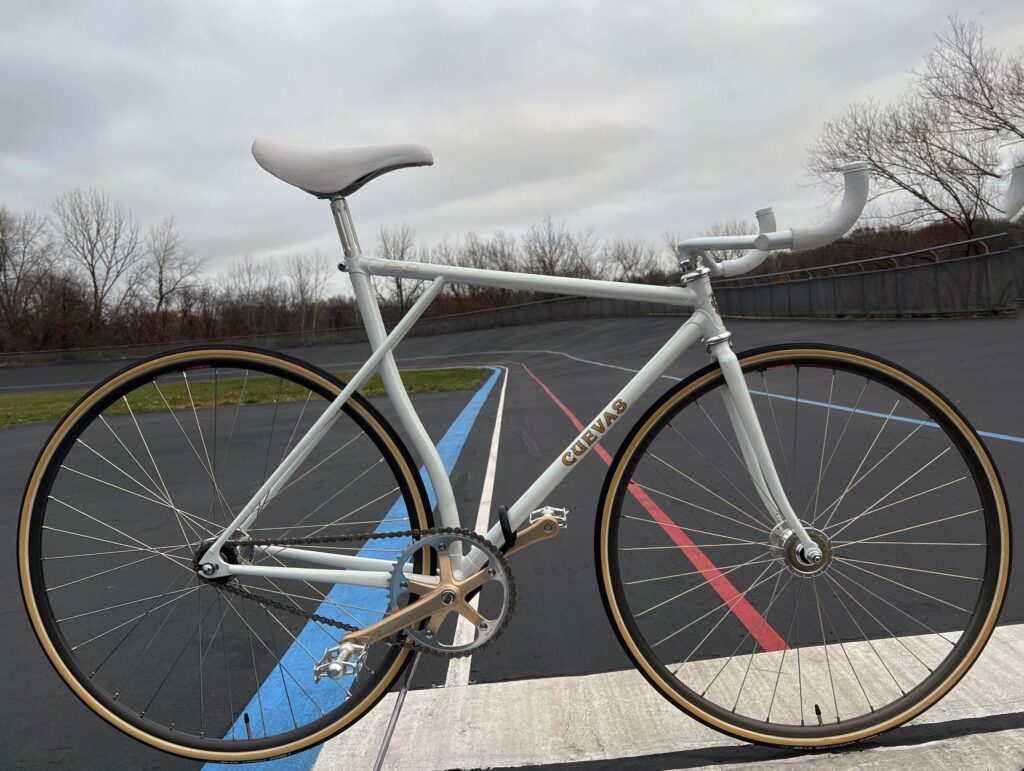

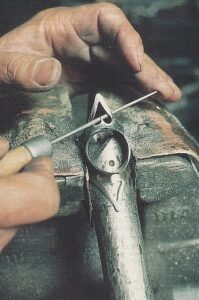
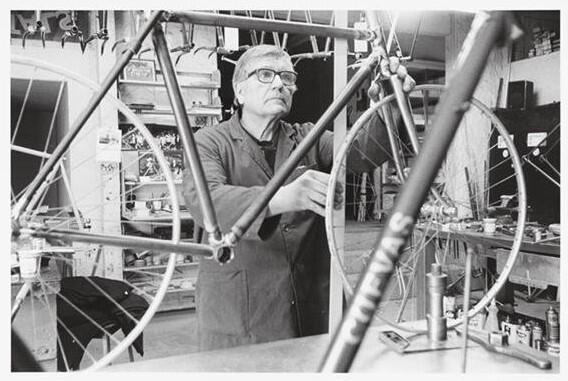
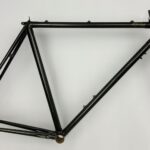
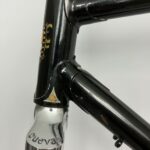
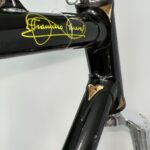
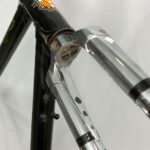
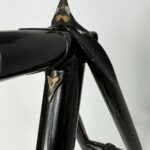
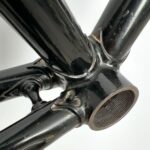
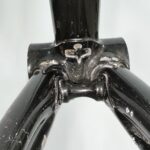
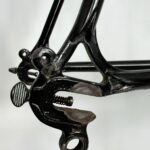

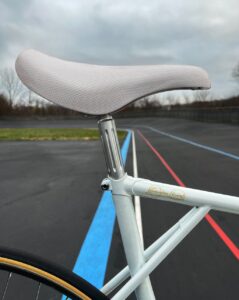
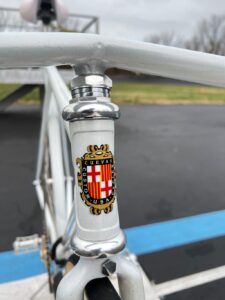
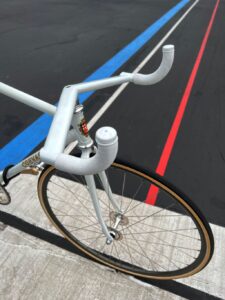
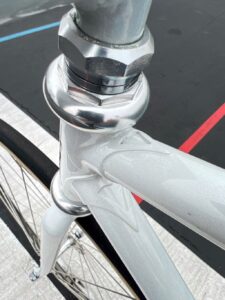
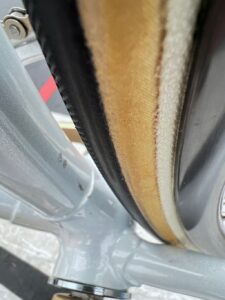
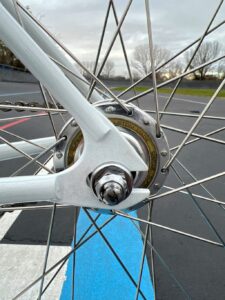
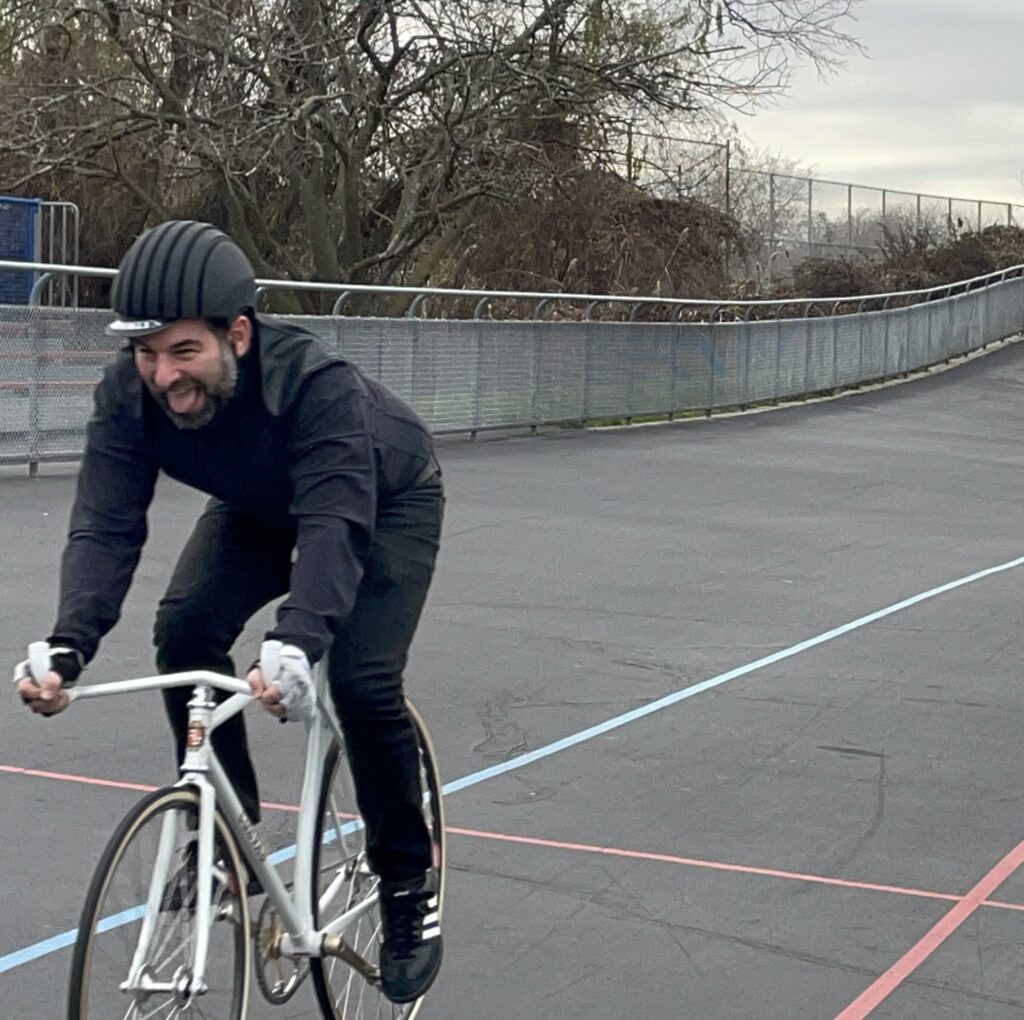
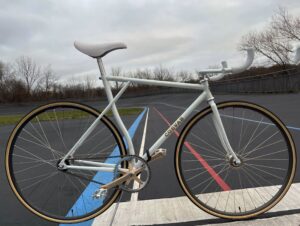

Hi,
I like Cuevas bikes, I have looked for one in my size for a long time. What I do have is a Cuevas tandem that has incredible paint. The frame was completelt chromed and the painted, leaving all the braze on’s chrome… would enjoy sharing pictures.
Here’s me on a Cuevas track bike winning the cal/az/nv district 4000 meter pursuit championships waaaay back in the day. Because MASI Carlsbad later built me a custom pursuit bike the Cuevas didn’t make it with me that year to the Nationals. Incredible bike was the Cuevas with us winning several points races.
Cuevas are great bikes and definitely it has an amazing story behind. Where can I find parts for sale?
I have a Cuevas that I no longer ride. I would love to sell it to someone who is a fan. Any suggestions on where I should list the bike for sale?
-peter
This was lovely to read. My name is Jay, and Fern and I ran the Cuevas Cycling Team under ACT from 2003-2008. We stayed in touch, and i was on the phone with him (we live overseas now) not long before he died of multiple myeloma in 2017. He spoke with my dad too, saying “I’m not giving up, Fred, it’s only my body that won’t continue.” Paco, Andres, Diego, and Fernando were just wonderful people. I miss Paco, Fern, and Andres. Diego suvives them and is raising kids with his partner, but no longer in NYC.
One correction: That is Paco brazing the frame in the photo, not Fernando. That’s in the basement of Fern’s old shop in Queens. Every now and then Andres would come by and paint a bit, his talent apparent even after he had had a stroke.
Thank you so much for this.
Hello. Stumbled onto your page by accident. I met Andreas in the 90’s when he was building in a converted garage in Ridgefield Park. He designed for me a one of a kind road bike with 650c wheels. Being short, the rear triangle is tight and seat tube is nothing in length. The frame is made with some Columbus and Reynolds tubes. The total weight is maybe 15lbs due to its size. What a kick though to do hills on this. Thank you for the memory.
My late brother Al met Andres in the mid 80s which blossomed to our families being intertwined. We rode with the Cuevas family on Sunday mornings leaving from the ‘triangle’ off the LIE in Little Neck for many years. Senor Cuevas had his shop in Astoria; Paco worked for Union Bicycle Shop on 14th Street, Andres brazed for his Dad and his sister Maria also helped with the business. The family was rich in cycling history and we shared many memories with the Cuevas family. Andres ultimately opened his store in Alphabet city as Senor Cuevas was getting older. Andres built a 753 tandem with Campagnolo Tandem components for us which is still being ridden on special occasions. Early 2000s, I crossed paths with Paco and his wife in Colorado (of all places) and I heard Andres had some medical challenges. I’m not sure if the family continued with the business but they did make their mark in cycling history.
Hi, I was wondering if you still have a Shimano 7200 quill available? Thanks, Richard
I have had the pleasure of meeting Andres Cuevas and have listened closely to some of his magnificent recollections of the glory days of Cuevas Bicycles. He has reason to be proud of his Cuevas heritage.